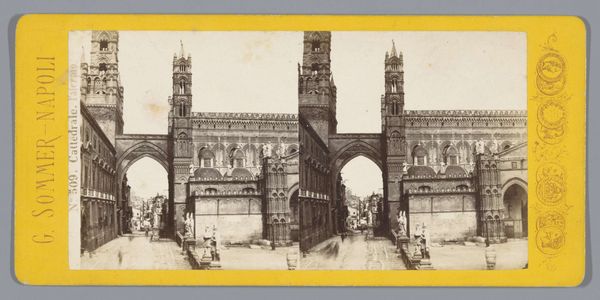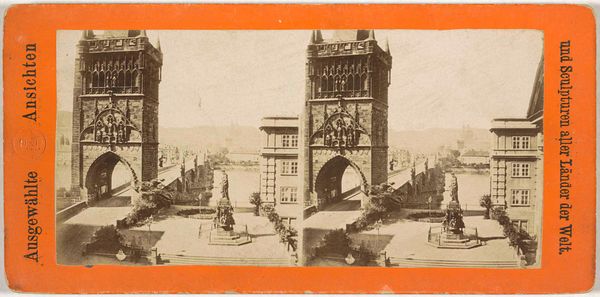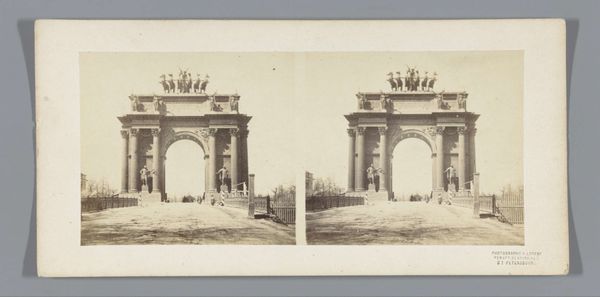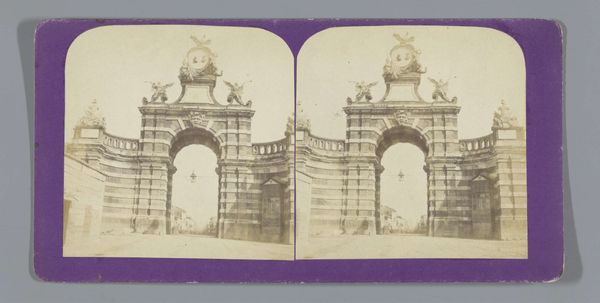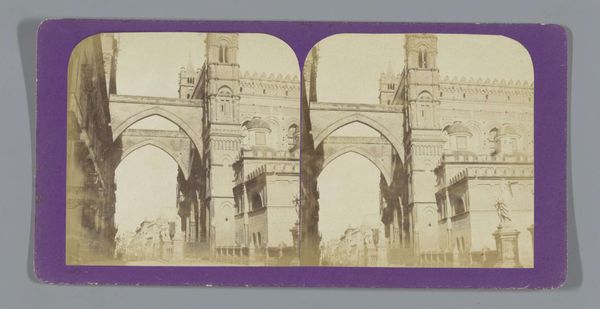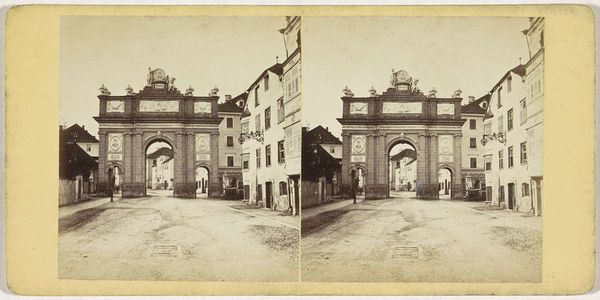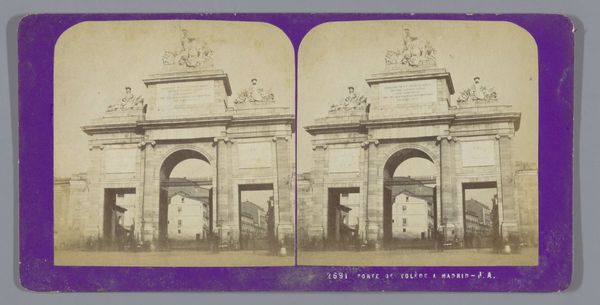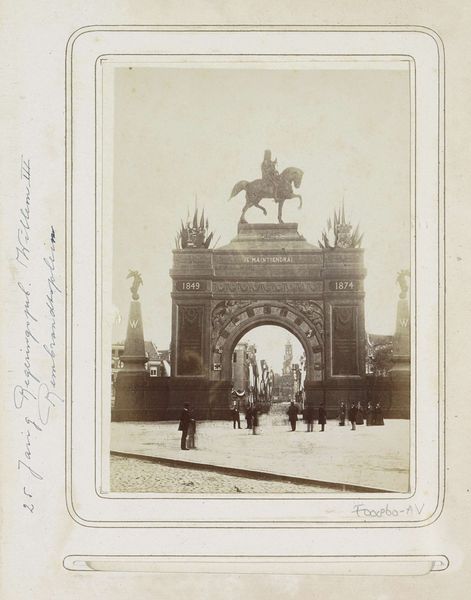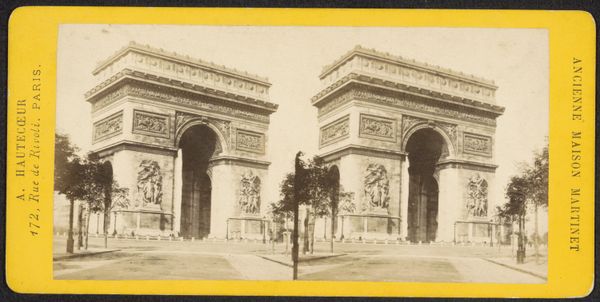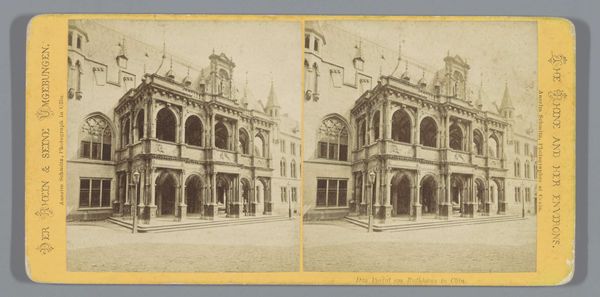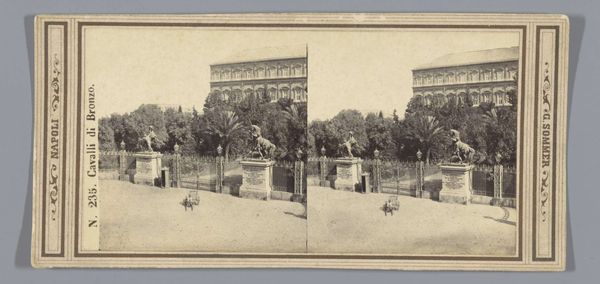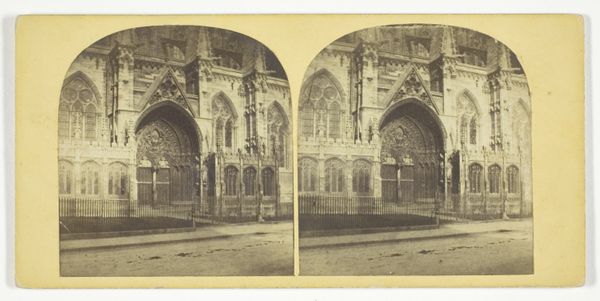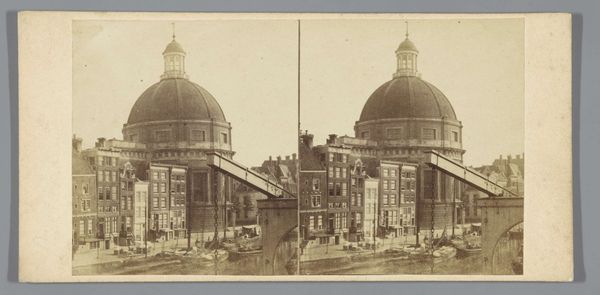
print, photography, architecture
# print
#
german-expressionism
#
photography
#
cityscape
#
post-impressionism
#
architecture
Dimensions: height 77 mm, width 156 mm
Copyright: Rijks Museum: Open Domain
Curator: Immediately, it’s a very romantic depiction of industrial progress, like a fairytale castle looming over the modern age. Editor: The "Poortbrug over de Elbe bij Hamburg", taken in 1903, does possess that tension. You have the imposing architecture of the bridge itself, juxtaposed against what appear to be trolley tracks and pedestrian traffic. It’s almost photographic reportage, focusing on function. Curator: It is intriguing how Geldolph Adriaan Kessler has managed to merge the ornamental with the functional. He certainly was inspired by German Expressionism. The intricate stonework against the austere lines of the iron bridge feels quite poignant. One cannot simply gloss over the way its structure imposes itself on the landscape and, simultaneously, how humans interact within this structure. Editor: Absolutely. I'm struck by the material reality of the scene: the steel and stone comprising the bridge itself, clearly manufactured, then brought together. One thinks of the immense labour and investment required for such a large-scale project, and all the related social dynamics of such transformations in the urban landscape. The print reminds us that technological advances come with distinct social costs, particularly if the aim is capital efficiency and profit. Curator: Though the physical exertion in erecting such architecture is paramount, I’m thinking more of Kessler's technical considerations when photographing the structure itself. He employs dramatic perspectives—not to highlight labor, but the visual experience itself—creating, in essence, an experience that can take on allegorical value for those willing to immerse themselves in its meaning. Editor: That’s an astute point, considering photography’s dual role as both art and tool. Yet even allegorical or beautiful scenes never arise separate from an embedded system of social forces—economic necessities are part of every aesthetic process, of every act of artistic expression. Curator: Yes, indeed! Looking at it through your materialist perspective offers an alternate interpretation to mine. Editor: Well, precisely. Understanding materials and conditions makes art richer and helps us see it more clearly.
Comments
No comments
Be the first to comment and join the conversation on the ultimate creative platform.
